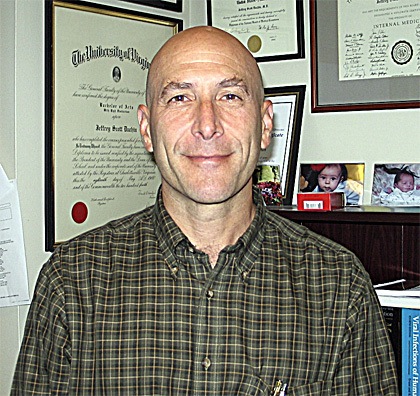Dr. Jeff Duchin, chief of Communicable Disease and Immunization at Seattle & King County Public Health department, offers answers to the following commonly asked questions on the novel H1N1 (Swine) flu:
Q: The recent report released by the President’s Council of Advisors on Science and Technology indicated that up to 50 percent of the United States population could become infected with H1N1 flu this fall and winter. Do you agree with these estimates?
A: While 10 to 40 percent of children and a smaller proportion of adults typically become sick from flu during regular flu season, most people have no immunity to this new H1N1 virus. For this reason, it is likely that many more people will become infected than in a typical flu season. It is important to remember that among all infected people, most recover without complications. However, with a new pandemic influenza strain like H1N1, because more people than usual do get infected, there are also more serious cases including hospitalizations and deaths. I think it is reasonable to plan for two to three times the amount of illness we see in a typical flu season, with the majority of cases and serious illnesses among children and young middle-aged adults.
Q: How will Public Health monitor flu activity in King County this fall?
A: Public Health agencies nationwide are shifting from tracking individual cases to monitoring for the extent and severity of the outbreak in the community. This primarily means tracking hospitalized cases — we will not be requesting reports on all cases of influenza. In addition, the Washington State Public Health Laboratory will test specimens from health care workers and pregnant women who have a positive screening test for influenza A, even if they are not hospitalized. However, this testing should not be relied upon to make clinical management decisions because it is not timely. In addition, other important surveillance methods include school-absenteeism reporting by King County schools, our lab-based sentinel provider surveillance system, and our syndromic surveillance for influenza-like illness at King County emergency departments and selected primary care practices.
Q: How long do you think H1N1 flu will circulate in King County?
A: My best guess is that we will see influenza activity increase in late September and continue through October and November, possibly longer. I don’t have a prediction regarding whether we will see a second wave of influenza A H1N1 after an initial fall/winter outbreak, but I hope that the supply of vaccine will be adequate to allow us to immunize many persons this fall and minimize the impact of a second wave, should it occur. Another potential problem is a simultaneous or sequential wave of seasonal influenza, which is why we are recommending all persons get their seasonal influenza vaccination as soon as it is available in the community.
Q: What are the differences between risk groups for H1N1 flu versus seasonal flu?
A: The risk groups for influenza H1N1 and seasonal flu are similar. Both include young infants, pregnant women, and persons with underlying medical conditions such as asthma and other chronic lung diseases, chronic heart disease (primarily congestive heart failure but not hypertension) metabolic disease (primarily diabetes), certain neurological diseases, and immune suppression. The main difference is that influenza A H1N1 causes relatively fewer severe cases among adults over 65 years of age and more severe cases among younger persons. For a complete list of high-risk medical conditions, see Public Health’s influenza flu web page at www.kingcounty.gov/health/h1n1
Q: Will the seasonal flu vaccine help prevent novel H1N1 influenza?
A: Seasonal flu vaccine is important to protect against seasonal strains of influenza that may also cause disease this fall, but will not protect against the new virus. This is why a separate vaccine is needed for the influenza H1N1.
Q: What steps are being taken to ensure the novel H1N1 vaccine will be safe?
A: The novel H1N1 vaccine is manufactured in the same way as seasonal flu vaccines, and the manufacturing process has the same regulatory oversight as seasonal vaccine from the FDA. At this time, several studies are under way to determine the best dose of vaccine, and these studies will also monitor for any adverse effects, although the safety of the vaccine is likely to be similar to seasonal flu vaccine. The Centers for Disease Control is encouraging the public and health care providers to report any potential adverse effects of vaccination through the Vaccine Adverse Events Reporting System (VAERS), the main way vaccine safety is monitored in the United States currently. In addition, CDC has established additional methods to monitor the safety of this vaccine for unanticipated problems, including: a vaccine safety monitoring network in collaboration with large managed care organizations that focuses on rapid detection of potential problems; monitoring of 1.5 million U.S. military personnel in collaboration with the FDA and the Department of Defense; and active surveillance for Guillan-Barre syndrome in 10 states.


